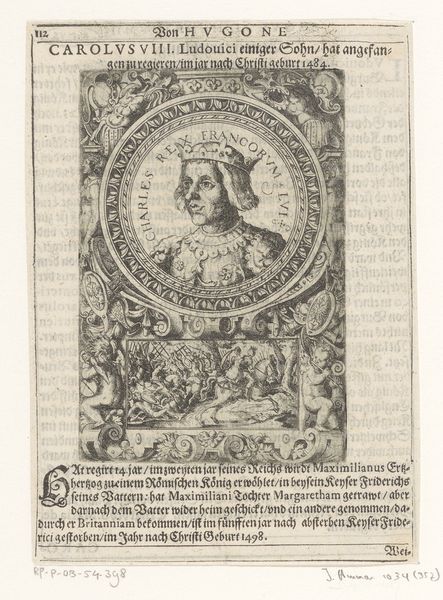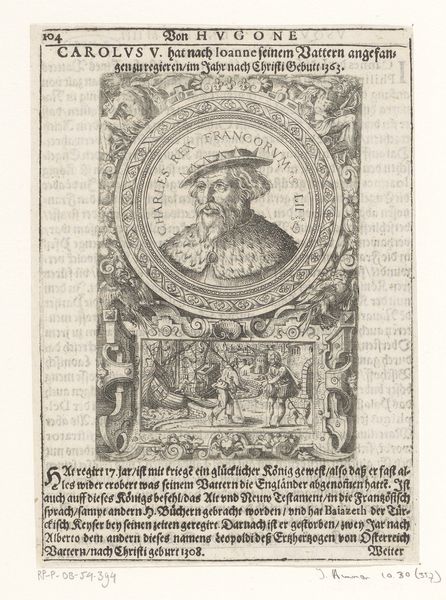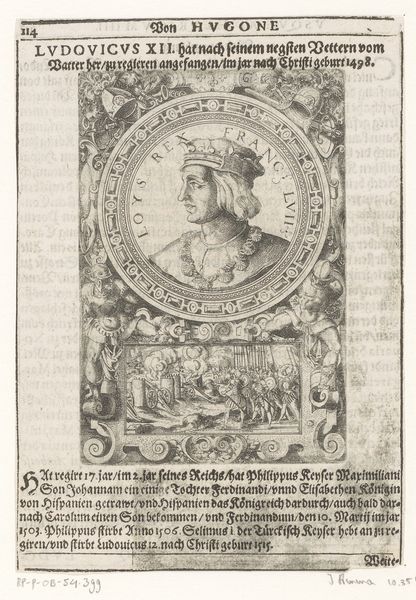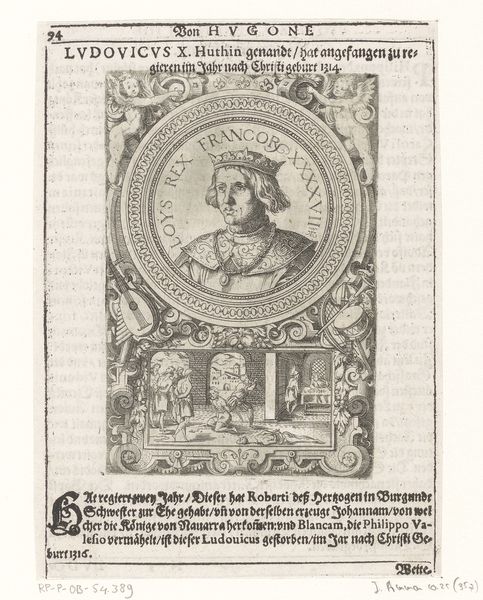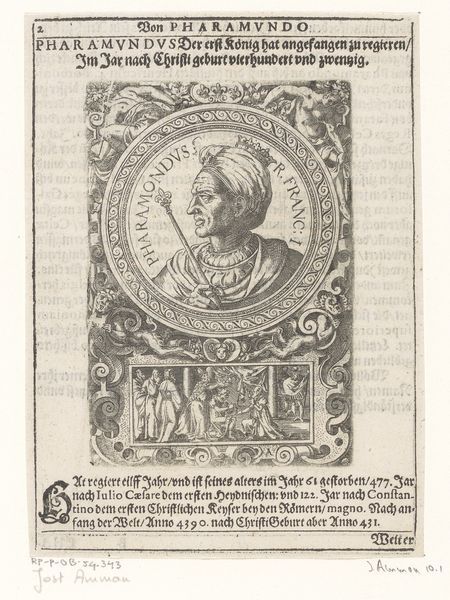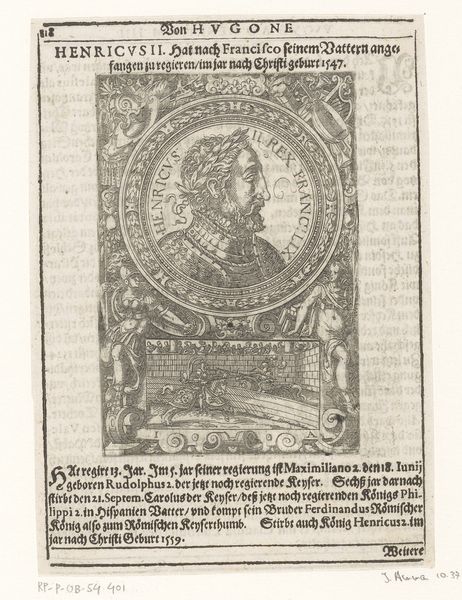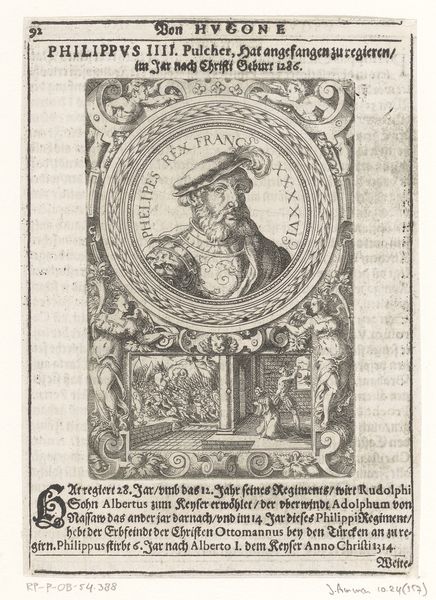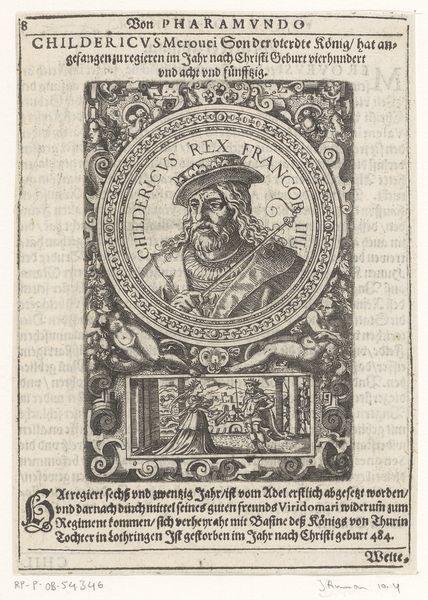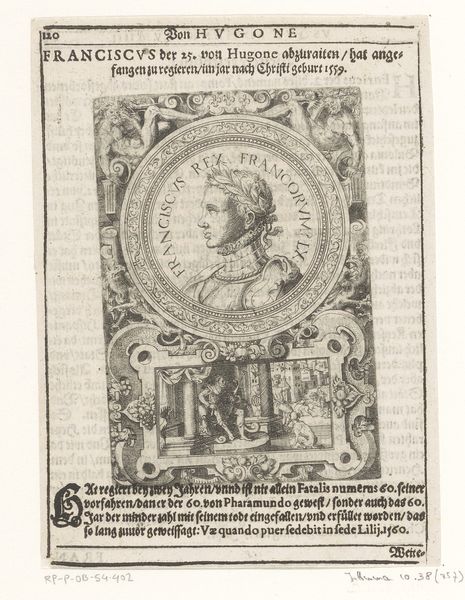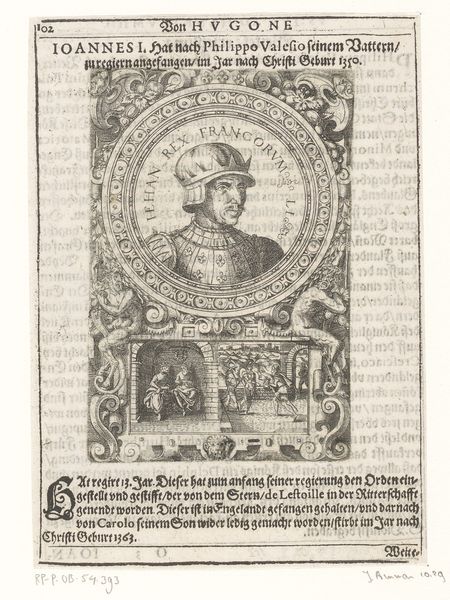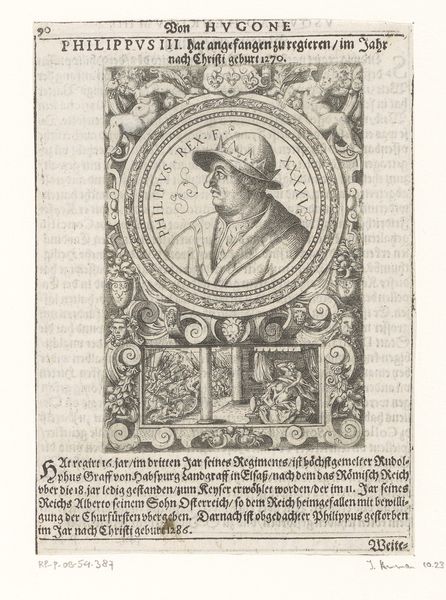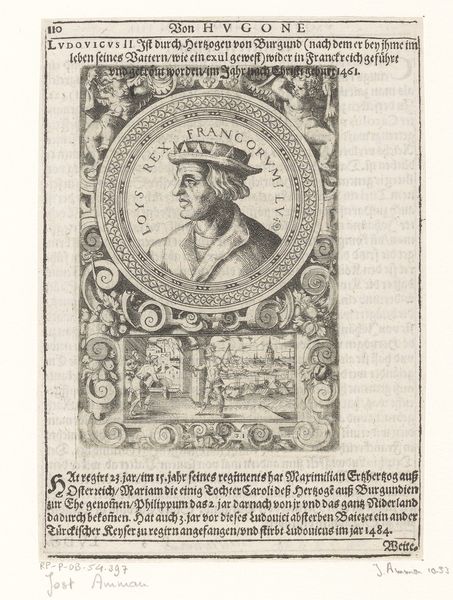
print, woodcut, engraving
portrait
medieval
pen drawing
woodcut
history-painting
engraving
Dimensions: height 117 mm, width 79 mm
Copyright: Rijks Museum: Open Domain
Editor: Here we have Jost Amman’s 1598 print, “Portret van Filips VI, koning van Frankrijk,” held by the Rijksmuseum. It strikes me as such a dense little image, packed with both text and really energetic scenes. What do you see in this piece? Curator: It’s interesting that you mention its density, because that's one of the first things that struck me. Look at how Amman combines the portrait of Philip VI, encircled with Latin text and regalia, with this very active battle scene. What do those symbols—kings, crowns, armor, soldiers in combat—conjure for you? Editor: Well, power, obviously. A lot of visual cues point toward military strength and royal authority. But how do the printed words function with those images? Curator: Precisely! Words work almost like talismans here. Text used this way signifies less specific content, and more authority. Notice the ornamental initial letters, and how the text surrounds the images almost possessively. The text doesn't just describe the image, it authenticates it. Editor: So the act of printing gives it a weight beyond just the image itself? Curator: Exactly! It suggests widespread acceptance and the solidification of cultural memory around Philip VI's reign and its significance within history. The battle scene beneath isn’t just an action, it’s an allegory for his rule. Editor: That connection between the textual and the pictorial is much clearer now. It's like Amman is solidifying Phillip VI's legend. Curator: Yes, and legend in this context works almost like a psychological reinforcement, connecting the past king's deeds with the contemporary viewer's understanding of power and legitimacy. Editor: Thanks, I hadn’t considered the layered aspect of both the image and text conferring such authority!
Comments
No comments
Be the first to comment and join the conversation on the ultimate creative platform.
